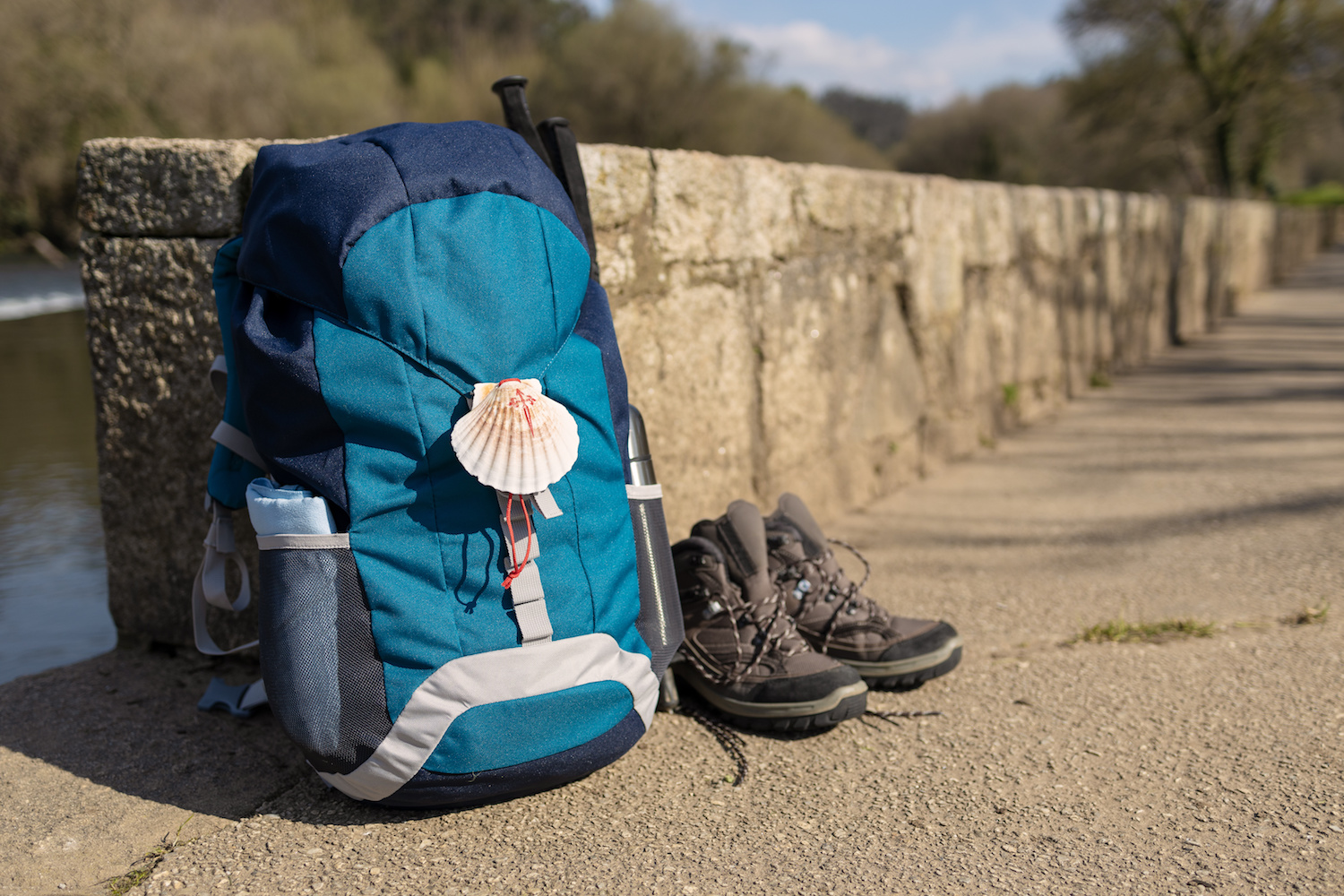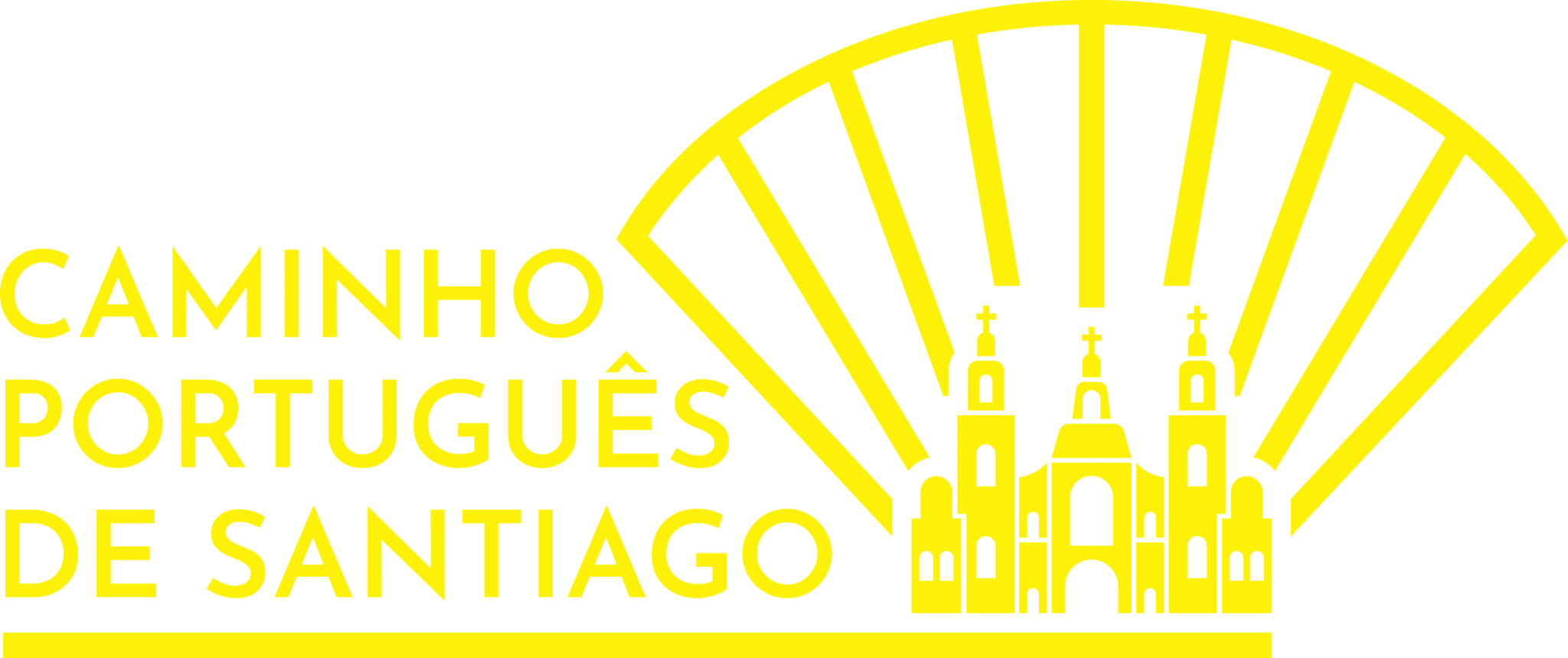What to bring in a backpack for the Camino de Santiago

To make your Way to Santiago you have to know what to bring. An adventurous spirit and willingness to sacrifice will do, but they are not everything. Comfortable footwear, first aid kit, deodorant are important pieces for the journey ahead. Be careful, though. You don’t want to get too loaded. Then you’ll feel the weight starting at mile 10. Let’s start telling you what to pack in your backpack for the Camino de Santiago.
Way to Santiago: What to wear
There is everything on the Way to Santiago, but it is important to know what to take. From people walking barefoot to the latest sneakers from the best brand on the market. It’s whatever works best, really. The footwear will support your weight for the whole journey, so the choice has to be personal. For those who are not in the habit of walking or exercising it is normal not to know what to buy.
Our answer to what to wear on the way to Santiago is: it depends on the weather. If you go during the dry summer months (even if it rains sometimes in June and July in Galicia) the best thing to do is to wear sneakers with a good, heavy sole. In the wet months, to avoid getting stuck in the mud, it is best to wear boots.
This is one of the cases in which the expensive came out necessary. Since the Santigo path forces you to walk a long way and with so many different terrains, you can feel the difference from a quality shoe, to something cheaper. It is worth the price.
However, you have to wear your new shoes for many hours before you set off on your adventure. If you wear new shoes, you risk (even more) having blisters on your feet. It is to be avoided.
Way Santiago: What to pack
Mathematics is everywhere, and on the road to Santiago is no different. There is a formula to know what is the ideal weight you can bring with you. Your backpack must have 10% of its weight. That is: if you weigh 70 kilos, your backpack can only have 7.
What looks like a lot more is not. So it is important to know what to take so as not to have anything in excess. In the past, pilgrims went on the road with only what they had on their bodies. But there is no need to go to extremes. Let’s go to the essentials:
1. Backpack
First, the backpack for the Camino de Santiago itself should not weigh more than 1 kilogram. And second, it must have room for at least 35 liters. 40, at most. It fits everything that is needed. Get a backpack that has a rigid frame and waist adaptation straps, to distribute the weight over the shoulders and waist.
2. Sleeping Bag
It is a must. Although some hostels offer sheets, not all do. Plus, the nights can be cold, even in the summer. So the best thing to do is to take a slightly heavier sleeping bag in the winter and a lighter one in the months couting from May. You have to play with this information and with the weight you can/should carry in your backpack.
3. Clothing
You don’t need more than two changes of clothes (three at the most). There are washing machines in almost every hostel – for a fee – and you can always wash them manually and hang them to dry for the next day. Bringing blue and white soap is a good idea. The idea is to always have a change for the next day until you get to Santiago de Compostela.
Rainy or sunny, it is always a good idea to take a raincoat on a trip. The weather is treacherous and it is better to be safe. A hat is important to avoid sunstroke and to protect you from the sun. To avoid athlete’s foot, it is best to bring flip-flops for bathing. And after a whole day of walking, they are like little clouds on your feet.
4. Hygiene and first aid
Toothbrush and toothpaste, one of those space-saving 3-in-1 shower gels, and sunscreen. Try to put everything in a small case so it doesn’t take up too much space. In another little pouch, leave basic first aid supplies. For foot blisters there is nothing better than Compeed. It is like a second skin and protects against pain. In case of emergency, 112.
5. Food and Drink
Don’t overdo it. When you have more eyes than strength, fruit weighs more than you might expect. Something to eat in the middle of the hike and plenty of water. There are stores along the way where you can replenish your strength. There is no need to go loaded.
6. Documentation
These are some of the important documents to make the Way to Santiago without bureaucratic worries.
Citizen’s Card/Passport
As with every trip you make, it is important to have identification in case something happens. Some hostels even ask for identification, so they won’t let just anyone stay overnight in their rooms.
Pilgrim’s Credential
The certificate that gives you access to the perks of the Way of Santiago. For example, access to public hostels, pilgrim menus, so as, at the end of your way, you can receive an official document with the kilometers traveled. To get the diploma you only need two stamps per day. Don’t worry, churches, cafes, and hostels all have a stamp for you. The credential can be acquired in places like the Porto Cathedral or in the many public hostels in the cities.

European Health Insurance Card
If you are an EU resident, you are entitled to this insurance. If something happens – let’s hope it doesn’t -, you can go to any hospital and present this card. You pay the same as you would pay in your home country. Without it, the differences can be substantial.
Debit/Credit card
Money is in our midst, and the road to Santiago is no exception. Have some cash on you (not much) and your card well hidden. You will pass through many towns, and therefore through ATMs.

Way to Santiago: How to prepare the rest of the journey
Now it’s time to prepare your backpack for the Camino de Santiago and get on your way. On our website there are descriptions of the stages of the Portuguese Central Way, with detailed information and maps customized by those who have already done the way so you don’t get lost.
Come and discover the starting point for a good path!
